Today I visited a historical exhibit on Roanoke Island in the Outer Banks of North Carolina. The most interesting part of the park was the Elizabeth II, a replica modeled after the late-1500s sailing ships used to bring colonists and explorers to the New World.
People have an idea of how these ships work from movies and touring exhibits. My favorite was always the replica of the HMS Bounty that was constructed in 1960 for the 1962 movie Mutiny on the Bounty, featuring Marlon Brando, Trevor Howard, and Richard Harris. (The possibly more famous Clark Gable version was from 1935.) I visited the replica many times as a child when it was moored at the St. Petersburg Municpal Pier in Florida and later when it visited Annapolis, Maryland shortly before her unfortunate demise off the Outer Banks in Hurricane Sandy.
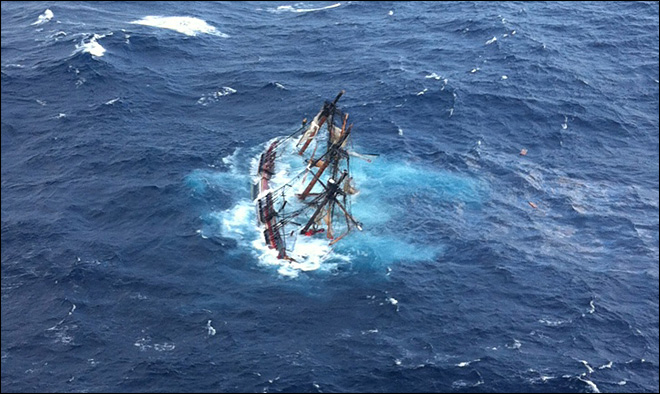
Loss of the HMS Bounty replica in 2012
The Bounty replica seemed downright spacious compared to the Elizabeth II. I’d always read about how small Christopher Columbus’ ships were and how small the Mayflower was but I’d never been on replicas that were that size. I’ve seen the USS Constitution in Boston and the USS Constellation in Baltimore, both of which are quite large. The ships I’ve seen in media and in person all had steering wheels. I recently learned the the Bounty replica, while very accurate in its reconstruction, was made twice as large as the original to accommodate the film crews and equipment. It’s easy to call up an image of an intrepid seaman lashing himself to the wheel in a raging storm, high on the raised, rear deck, holding forth against wind and rain and wave. (Never mind that the Bounty had only a single deck…)
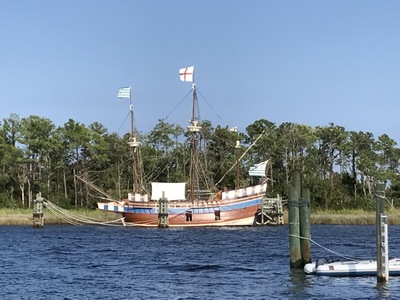
The Elizabeth II, happily afloat!
The problem was, when I went looking for said wheel on the Elizabeth II, I didn’t find one. There was a raised rear deck, alright, but there wasn’t a wheel up there. It was then that I noticed the large lever set into the floor in a compartment just below the raised, rear deck. I asked the costumed docent about this and was told that the lever used to steer the ship was called a whipstaff and that using wheels to control rudders was a later invention. Well I’ll be dipped in peanut butter and rolled in Corn Flakes! I hadn’t known that and I found it fascinating. It also makes perfect sense. Ship designers would use the simplest possible designs that would work until the vessels got big enough to require more oomph.
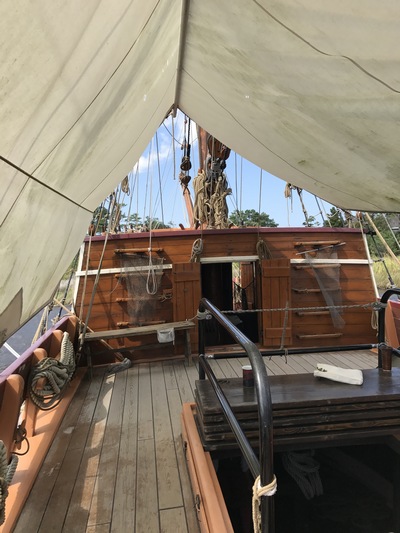
Looking toward the bow
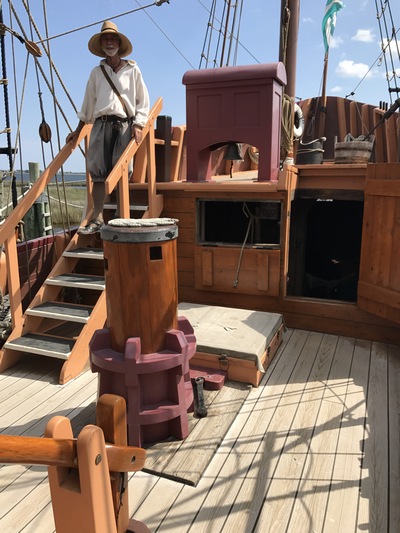
Looking toward the stern. Where’s that wheel? Oh… you can see the whipstaff though the opening down below.
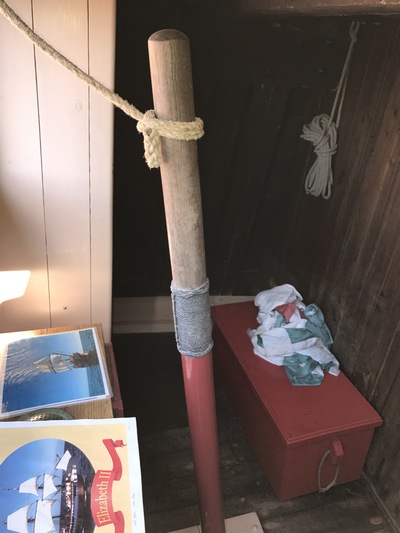
Close-up view
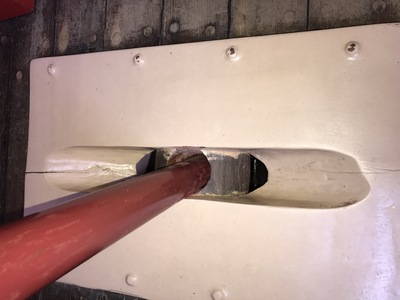
Pivot mounting on the deck
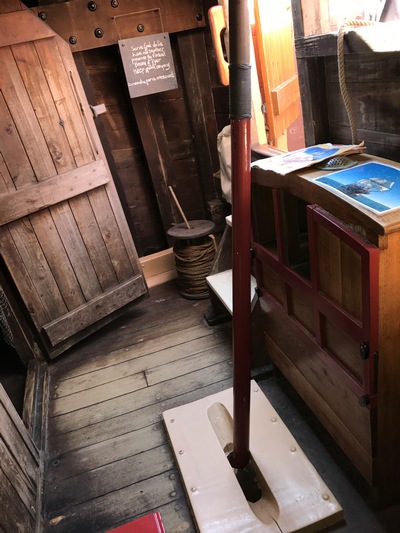
View from the opposite side
Like the steam locomotives of a later age, sailing ships were the most complex engineered objects of their time. They were living, breathing entities with stories and “souls” all their own. The energy, investment, study, and thought that went into building and improving them rivals anything going on in high tech now. They were the Internet of their day, and made the world smaller in much the same way.
